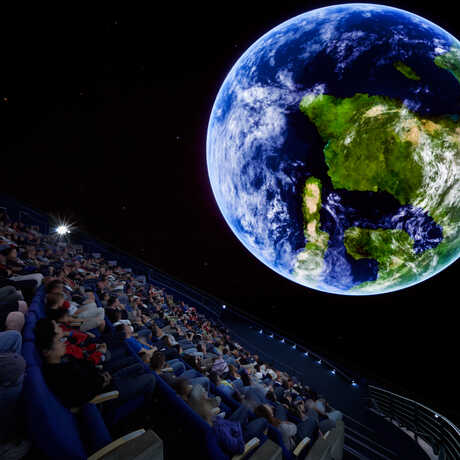Benjamin Dean Astronomy Lectures
From Dust Motes to Icy Mountains: Asteroids and Comets

This image from NASA's WISE spacecraft reveals the infrared glow of Comet Siding Spring as solar radiation causes it to release ice and dust from its nucleus.
From Dust Motes to Icy Mountains: Our Solar System’s Asteroids and Comets
Monday, February 10, 7:30 pm
Morrison Planetarium
Featuring Dr. Amy Mainzer, University of Arizona Lunar and Planetary Laboratory
Our solar system teems with asteroids and comets, which range in size from tiny dust particles to gigantic mountains that are worlds in their own right. While most of these objects remain in stable orbits that whirl them around the Sun for billions of years, every now and again something changes: Some objects can be perturbed into orbits that encounter Earth. In the last few decades, astronomers have begun systematic searches for potentially Earth-impacting asteroids and comets, and in the process have learned much about Earth’s nearest cosmic neighbors. As study of the distant universe has advanced, so has our understanding of the contents of our own solar system, and its potential to affect life on Earth.
About Amy Mainzer

Amy Mainzer is one of the world's leading scientists in asteroid detection and planetary defense. She is also the Deputy Project Scientist for the Wide-field Infrared Survey Explorer and the Principal Investigator for the NEOWISE project to study minor planets and for the proposed Near Earth Object Camera space telescope mission.
She appears in several episodes of the History Channel series The Universe and is the live-host of the educational segments that air between episodes of the PBS Kids show Ready Jet Go!
Asteroid 234750 Amymainzer was named after her.
From outer space to Earth's inner core, explore the universe from Morrison Planetarium's 75-foot digital dome.
